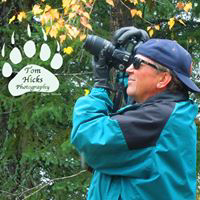Chicago's 2019 orb weavers
Sep 5, 2019 11:44:55 #
fbeaston wrote:
Great post ... like a couple of others, spiders aren't my favorite but the detail in these images is excellent & the descriptions interesting as always. Thanks for sharing.
I agree but spiders are so necessary for the environment
Sep 5, 2019 12:04:54 #
Sep 5, 2019 16:51:24 #
CHG_CANON wrote:
(If you don't like spiders, you probably should cl... (show quote)
Awesome spider shots and info, paul!

I recently had a dr. App., and saw a physician's assistant. She had her little finger taped up tight with the finger next to it. I asked what happened and she said, " I saw a spider and freaked out and stumbled and fell and broke my little finger. I am and always have been terrified of spiders." I can't imagine anyone being that scared of a spider. They are fun to photograph.
Sep 5, 2019 17:26:12 #
Sep 5, 2019 22:45:59 #
SWFeral
Loc: SWNM
I respect spiders, even though I have a scar on the inside of my right elbow from what was suspected to be a brown recluse bite, and adore orb weavers. These are beautiful portraits.
Sep 6, 2019 08:22:54 #
Thank you Susan, tommystrat, merrytexan, Katydid, SWFeral! I think maybe these images over the past few years have softened my own queasiness of the size of the harmless "monsters". Glad you enjoyed and do stay safe from the few that are the ones to be afraid of.
Sep 6, 2019 15:25:37 #
CHG_CANON wrote:
(If you don't like spiders, you probably should cl... (show quote)
Nicely done, Paul; kudos to you.


Sep 8, 2019 08:02:28 #
Rob48 wrote:
Nicely done, Paul; kudos to you. 



Thank you Rob, glad you enjoyed!
If you want to reply, then register here. Registration is free and your account is created instantly, so you can post right away.


 )
)






